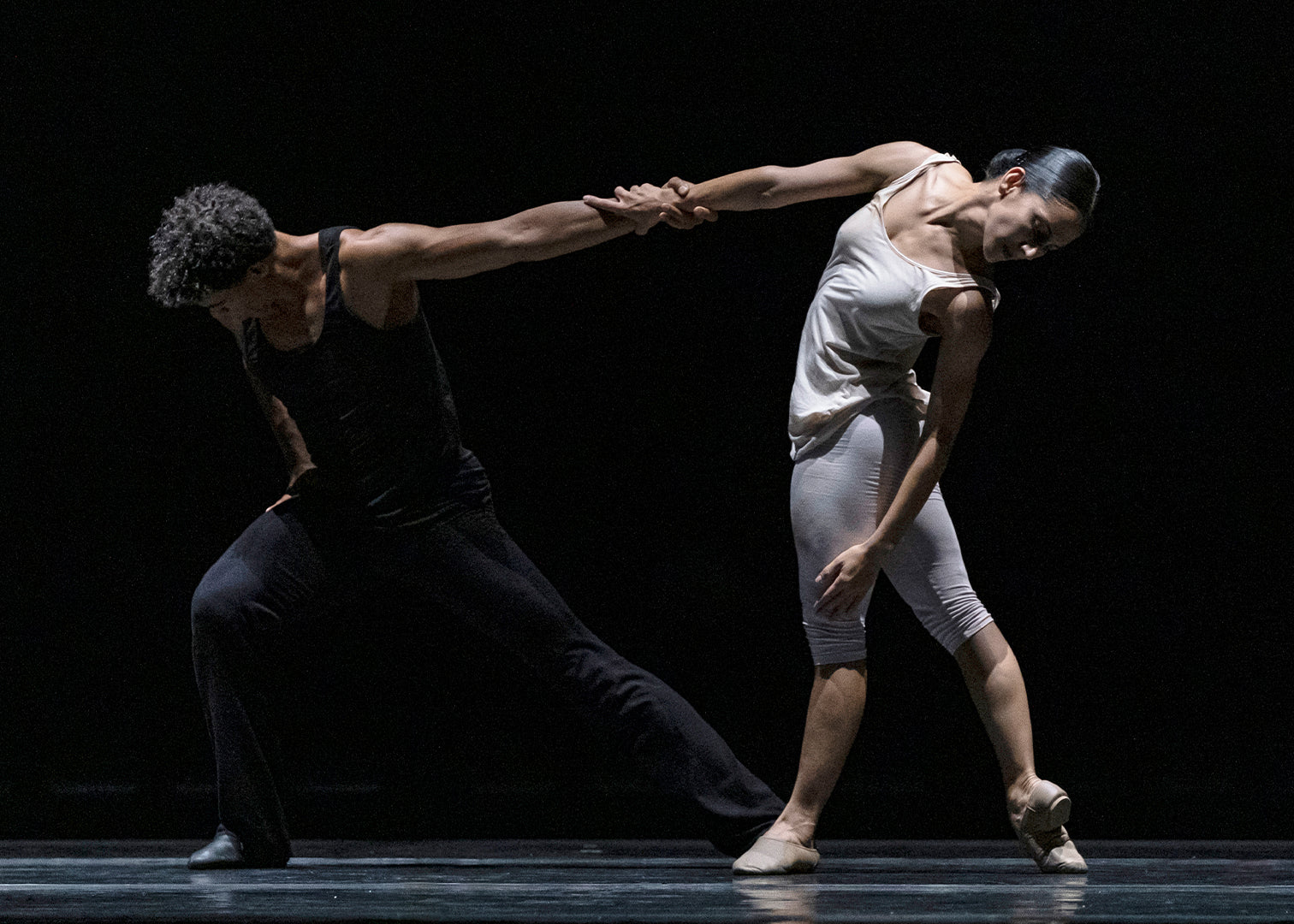The program presented two works: “Dead Reckoning” and “Triangulating Euclid.” Both works offered sets that were simplistic yet poignant, with choreography of unbridled energy, precision, and the joy of full-body motion. The first work of the evening undulated between relentless phrase work and ever-shifting directions to slowed-down pensive interconnectivity. There was beauty in its duet work, for even in moments of chaos, we were given shifting pairs onstage, connected and entwined—be it toe to raised chest, a quick chest bump to another’s back, the nuzzling of chins, or a palm to cheek as if pausing time. With the eery closing sounds of trees falling, and the rush of tossed lime green paper leaves filling the air and covering the stage, “Dead Reckoning” was striking to behold. Still, it was the second work that left this reviewer’s mind contemplating long after final bows. It is also the first time ODC/Dance’s two choreographers Brenda Way and KT Nelson collaborated on a single work alongside guest choreographer Kate Weare of New York city.
In “Triangulating Euclid,” the viewer finds oneself focusing less on narrative and more on the sculptural shapes at hand. Yet at the end of the work, we are startled to discover that a story—rich with cultural significance—has, in fact, been unfolding throughout.
The work begins with a dancer standing alongside the audience in a house aisle, peering through a rolled piece of paper like an old-fashioned spyglass, directing our attention to a performer onstage, alone in a downward spotlight. Behind her stands a massive square of crumpled-then-smoothed paper—one of just two set elements to enter the piece. As the soloist moves with quietude, we hear a woman’s voice telling her story of coming across a rare, original edition of Euclid’s Elements at an auction house. Initially unfamiliar with the importance of the work, the narrator continues, describing that upon further research, she learned this piece was “perhaps the most influential work in the history of mathematics.” As she speaks fondly of the book’s words, prints, and paper, a layering of music creeps in, gradually washing away the voice as the full cast enters the stage in minimal black attire, as if the ink of which she speaks has come to life.
Initially the work’s brusk transition into an intense beat-driven techno melody feels out of place, yet as the piece progresses and the audience is welcomed by a plethora of musical interludes, this segment begins to feel less jarring. Instead we remember it as a juxtaposition of modern day versus the historical era of the antique book. As the dancers cluster in lines, squares, and triangular formations, the company becomes reminiscent of graph paper—all the while performing angular movements characteristic of such graphs and equations.
The piece segues into its second section with the return of the lead soloist, now clothed in an additional white crinkled top. Again, we are reminded of the woman’s opening words, “the paper was beautiful,” as both costume and set continue to evoke the tactility of paper—another juxtaposition with modern day, as physical books such as these are often now replaced by digital counterparts. In the reverence of an operatic melody, a duet unfolds, while a third dancer painstakingly backs across the space, tapping out a line of white chalk (the second of the two set pieces). The line is broken as the duet slides through, literally and figuratively leaving their mark on the space.
Still, it is the final uproarious moments of the third section in which the audience’s epiphany takes place. Here, the full cast has received energy from one another, through ecstatic lifts to the quick quivering of an arm, passed from one to the next—that is, for all but one. Our soloist remains alone among the chaos, at times stood upon by the other dancers, as if nothing more than a doormat. It is in these moments when the work masterfully comes full circle. The soloist is Euclid’s Elements. She is the one who started this way of moving, of thinking, and—like the book, which was at one time the most influential tool in its field—sparked the evolution for the rest of society around her. Yet, as the dancers (and mathematics) continue to evolve, we find her now alone, obsolete, forgotten. An old relic in an auction house, once leading the charge, now walked across without regard.
ODC/Dance is an impressive company whose choreography is at once fluid and powerful, intricate and dynamic—and this is a concert not to be missed.









comments